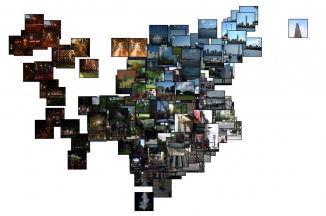To celebrate the launch of Humanities Data in R, the DHLab hosted a book talk and reception on Friday, December 4, starting at 3:30pm in Sterling Memorial Library, room 315. Co-authors Taylor Arnold (Statistics) and Lauren Tilton (American Studies) described the genesis of the book and overviewed its chapters. Pioneering in its design, the book covers four major types of data structures (networks, text corpora, geospatial data, and images) using humanities examples. Humanities Data in R is intended for a 1-2 semester introductory course on digital methods in the humanities and social sciences, or as an intermediate level self-study guide. While focused on humanities applications, the material is also a useful reference for anyone looking to apply exploratory data analysis methods to network, geospatial, image, and text data. A bulk download of the supplementary code and data can be found on the book's website.
A physical copy of Humanities Data in R is available through retailers such as Amazon or directly through the publisher, Springer. The Springer site also offers digital editions and free digital access to participating institutions through SpringLink. The book collection in the DHLab also includes a printed copy for use in the lab.
Photos from the event:


About the authors:
Taylor Arnold is currently a lecturer in the Department of Statistics at Yale and senior scientist at AT&T Labs. His research focuses on the analysis of large, complex datasets and the resulting computational challenges. A particular area of focus is the sparse representation of highly structured objects such as text corpora and digital images. He is the technical co-director of the NEH-funded project Photogrammar.
Lauren Tilton is a Ph.D. candidate at Yale University. Her interests include participatory media, twentieth-century history, and visual culture. She is the co-director of the NEH-funded project Photogrammar.